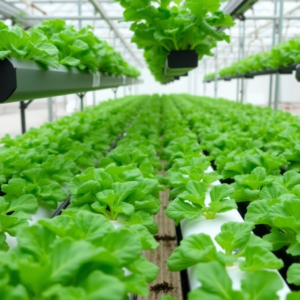A Beginner’s Guide to Starting Your Own Hydroponic Vegetable Farm Business
 Are you interested in delving into the world of sustainable agriculture and starting your own hydroponic vegetable farm business? Hydroponics is a soil-less farming technique that allows you to grow crops in a controlled environment, using water, nutrients, and light to foster plant growth. This innovative method not only produces high-quality vegetables but also conserves water and space compared to traditional farming practices.
Are you interested in delving into the world of sustainable agriculture and starting your own hydroponic vegetable farm business? Hydroponics is a soil-less farming technique that allows you to grow crops in a controlled environment, using water, nutrients, and light to foster plant growth. This innovative method not only produces high-quality vegetables but also conserves water and space compared to traditional farming practices.
If you’re ready to embark on this exciting journey, here are some key steps to help you get started with your very own hydroponic vegetable farm business:
1. Research and Planning: Before diving into hydroponic farming, conduct thorough research on the various hydroponic systems available, different types of vegetables you can grow, and the market demand for these crops. Create a detailed business plan outlining your goals, target market, budget, and marketing strategies.
2. Choose a Suitable Location: Select a suitable location for your hydroponic farm, taking into consideration factors such as access to water, electricity, and transportation. Indoor spaces like warehouses, greenhouses, or even shipping containers can be excellent options for setting up your hydroponic farm.
3. Select the Right Hydroponic System: There are several different types of hydroponic systems, such as the nutrient film technique (NFT), deep water culture (DWC), and ebb and flow system. Choose a system that aligns with your budget, space constraints, and the type of vegetables you intend to grow.
4. Source High-Quality Equipment and Supplies: Invest in high-quality equipment such as grow lights, pumps, reservoirs, pH meters, and nutrient solutions to ensure the success of your hydroponic farm. Purchase seeds or seedlings of your chosen vegetable crops from reputable suppliers.
5. Start Small and Scale Up: It’s advisable to start small with a few plant beds or modules and gradually expand your hydroponic farm as you gain experience and confidence. Monitor the growth of your crops closely, adjusting nutrient levels, pH, and light intensity as needed.
6. Implement Sustainable Practices: Embrace sustainable farming practices by recycling water, using organic nutrients, and integrating pest management techniques to reduce the environmental impact of your hydroponic farm. Consider utilizing renewable energy sources such as solar power to power your farm.
7. Market Your Produce: Develop a marketing strategy to promote your hydroponically grown vegetables to local consumers, restaurants, farmers’ markets, or grocery stores. Highlight the freshness, quality, and sustainability of your produce to attract customers and build a loyal clientele.
As such, starting your own hydroponic vegetable farm business can be a rewarding and profitable venture for those passionate about sustainable agriculture and fresh, locally grown produce. By following these steps and leveraging the benefits of hydroponic farming, you can create a thriving business that contributes to a healthier, more environmentally friendly food system.
